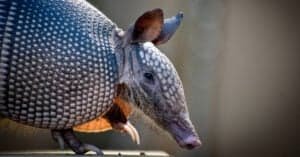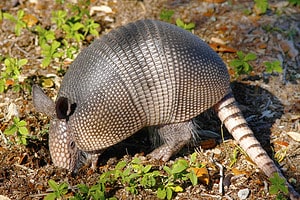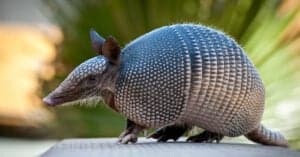Armadillos are fascinating creatures. In fact, millions of people from around the world voted to make the armadillo the next mob in the Minecraft Live 2023 event. More than 20 species of armadillos exist throughout North, South, and Central America. The mostly nocturnal armadillo usually burrows underground and maintains a mysterious profile. Relatively few people spot them out wandering about in the wild. Baby armadillos prove even tougher to spot than adults. They stick close to their burrows until they get big enough to follow their mothers out and forage for food. Let’s learn more about the baby armadillo.
Baby Armadillos May be Precocial or Altricial
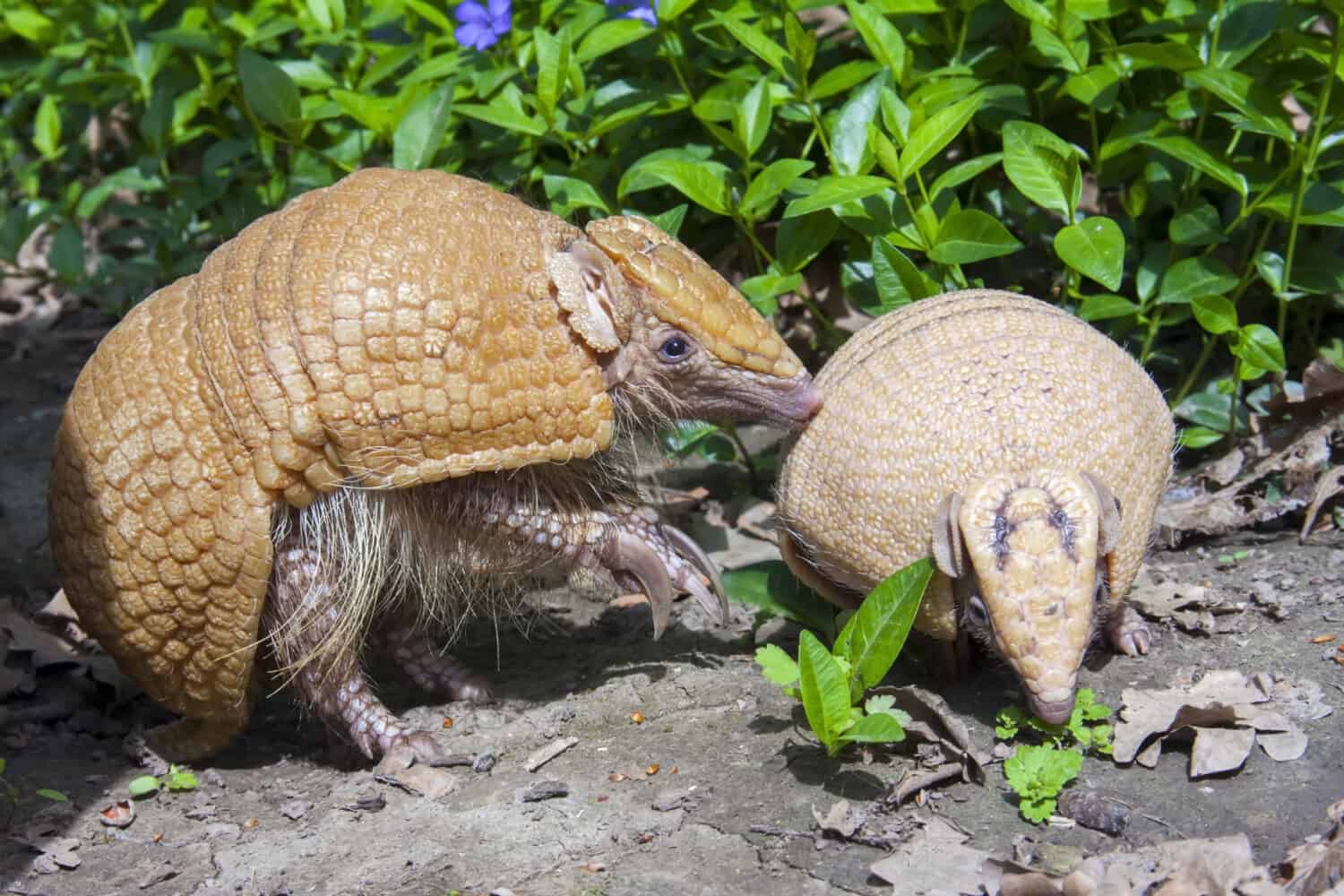
A baby armadillo may be precocial or altricial, but most take time to develop their adult scutes.
©belizar/Shutterstock.com
Depending on the species, baby armadillos may be precocial or altricial. Precocial armadillos open their eyes and walk soon after birth. Altricial species give birth to blind, helpless young that take longer to develop. Either way, mother armadillos care for their young until they can forage independently and care for themselves, often about 4 to 5 months after birth.
Some species are born with leathery skin, while others have early scutes, the tough outer armor on an armadillo. Most baby armadillos take a while to develop the hardened scutes they will eventually have as adults. Baby armadillos may be pink or lighter colored than their parents until they develop their adult scutes.
Nine-banded Armadillos Have Four Identical Quadruplets

Nine-banded armadillo babies look just alike for a very good reason.
©Brittany Cockrum/Shutterstock.com
The nine-banded armadillo is the only species native to the United States. Its range extends as far north as Nebraska, all the way south to Argentina and Uruguay. It only arrived in the United States in the 19th century, but it has expanded its range north and east persistently.
Nine-banded armadillos are the only mammalian species that consistently gives birth to four identical quadruplets. The mothers in this species produce eggs that, when fertilized, always split into four identical embryos. Unless something happens to one of the offspring before it is born, the mother will always give birth to four identical baby armadillos.
Nine-banded armadillos live to be about 12 to 15 years of age, and they begin having babies when they reach about one year. Each mother armadillo can produce more than 50 offspring in her lifetime. Each baby nine-banded armadillo, of course, looks just like its siblings, and they all look like small versions of their mother.
Only Three-banded Armadillos Roll into Balls
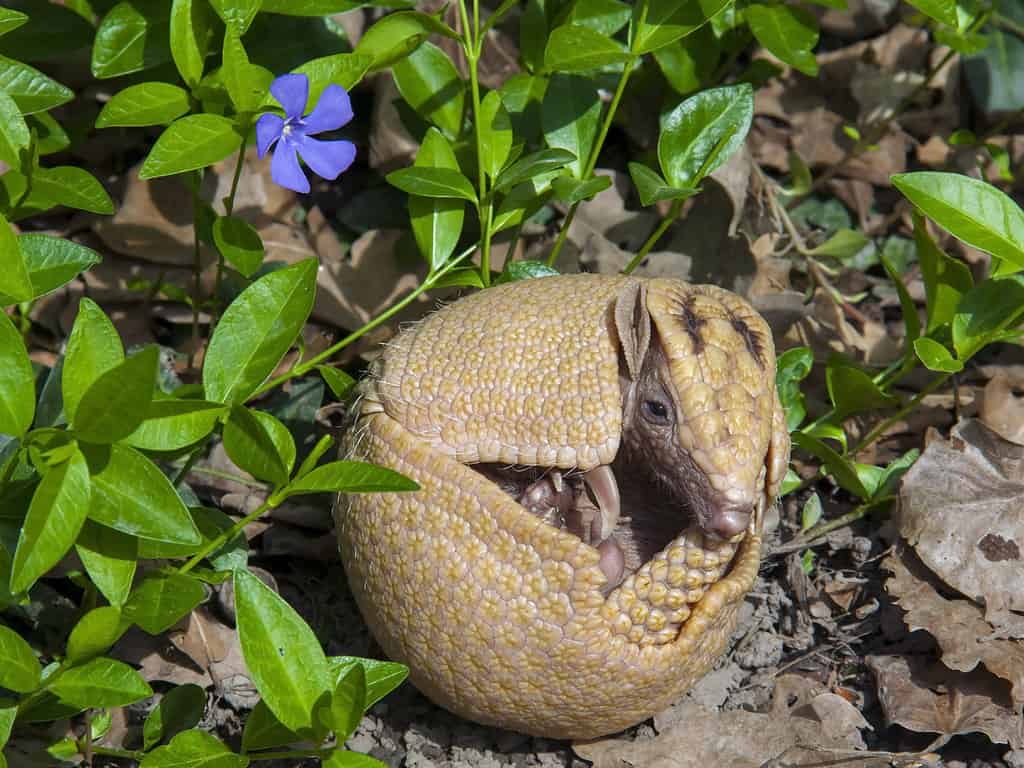
The southern three-banded armadillo is one of only two species that roll into balls.
©belizar73/iStock via Getty Images
The two known species of three-banded armadillos have the unique ability to roll completely into a ball. Other armadillo species cannot perform this amazing protective feat. Only the southern three-banded armadillo and the Brazilian three-banded armadillo have armored plates flexible enough for rolling into an almost perfect sphere.
The Brazilian three-banded armadillo lives only in the savannas and shrublands of northeastern Brazil. The IUCN Red List of Threatened Species lists this species as vulnerable with a decreasing population, The southern three-banded armadillo lives in similar habitat east of the Andes in Bolivia, southern Brazil, Paraguay and Argentina. It is listed as near-threatened on the IUCN Red List. Neither of these species dig their own burrows, relying on the abandoned burrows of other animals and their own armor for protection.
Giant Armadillo Pups Grow to the Size of a Pig
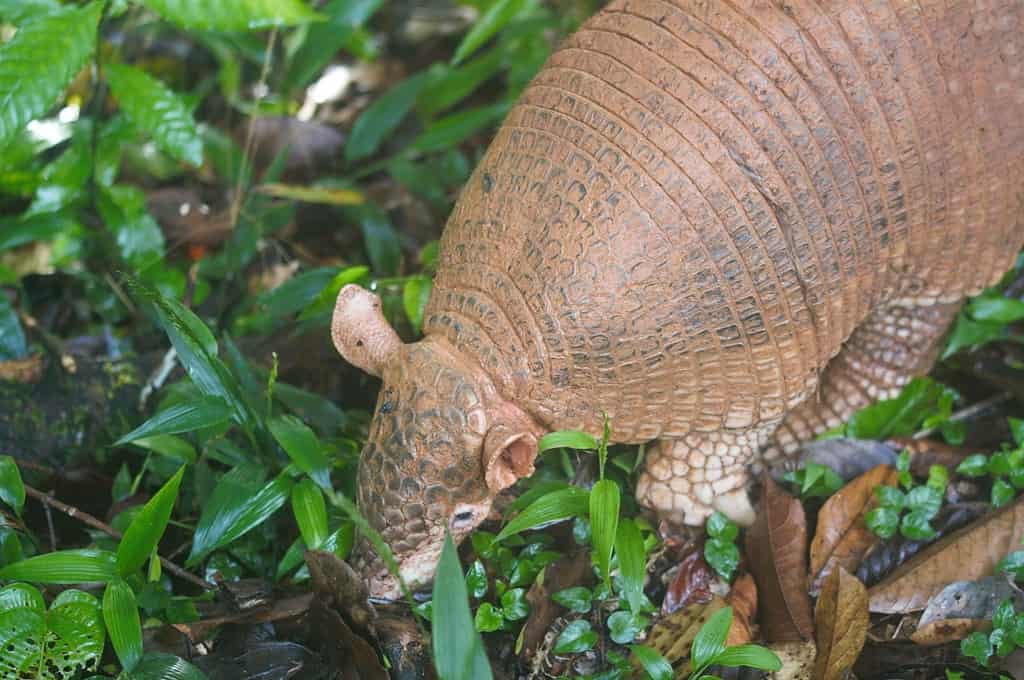
The reclusive giant armadillo can grow to more than 120 pounds and up to 5 feet in length.
©Guillaume Delaitre, CC BY 4.0, via Wikimedia Commons – License
The giant armadillo produces babies that average just 0.25 pounds. They usually have just one pup at a time, sometimes two. These babies grow quickly, though. They wean after just 4 to 6 weeks, and they reach sexual maturity by 9 to 12 months. Giant armadillos average about 120 pounds, but they have reached weights of up to 180 pounds. They can reach lengths of up to 5 feet.
This species lives in forests and grasslands all over the northern half of South America. Many different animals use the burrows that the giant armadillo digs. The IUCN Red List of Threatened Species lists the giant armadillo as vulnerable with a decreasing population.
Most Armadillo Babies Have Strong Claws

Most armadillo babies have strong claws that they will use for foraging and digging burrows.
©PapaPics/iStock via Getty Images
Armadillo pups usually have strong claws on their front feet. Some have much larger claws than others. Although baby armadillos drink milk from their mothers like other mammals, they will eventually use their claws to forage for food and, in the case of most species, dig burrows. Armadillos dig up ants, termites, grubs, worms, spiders, scorpions, and all sorts of other insects and invertebrates. They also eat vegetation as the need arises.
Some Baby Armadillos Are Quite Hairy

The screaming hairy armadillo is one of the hairier species of armadillos.
©crbellette/Shutterstock.com
A few armadillo species are much hairier than others. The large hairy armadillo and the screaming hairy armadillo both have lots of hair that emerges between the bands of their scutes. They also have abundant hair on their bellies. The hairy long-nosed armadillo, which lives in the Andes, has so much hair it looks more like an opossum than an armadillo.
Screaming hairy armadillo babies already have noticeable hair growing between their bands when they are still very young. This species, named for the way it screams in protest if bothered, lives in the desert east of the Andes.
Most Baby Armadillos Look Like Their Mothers
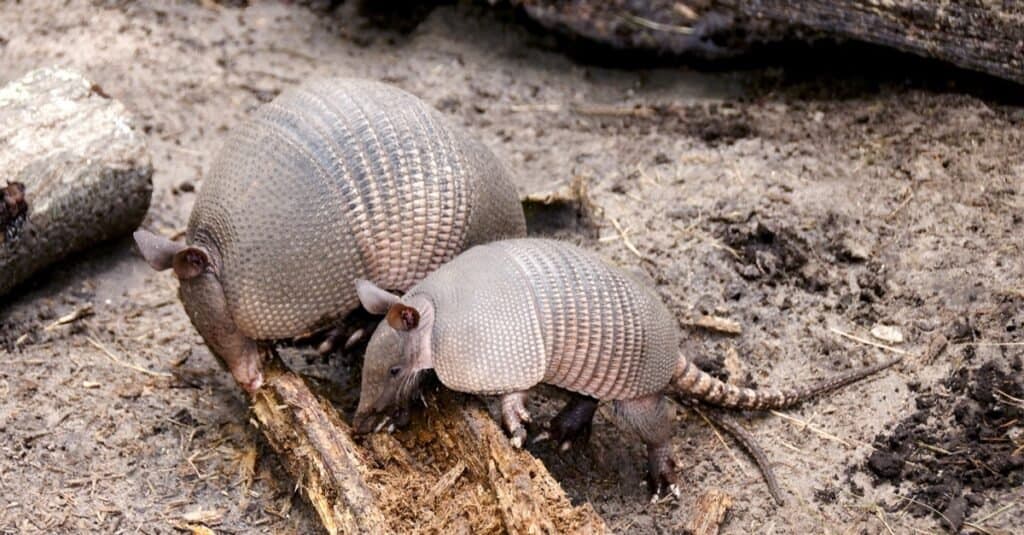
Baby armadillos often look just like theit mothers, except smaller.
©Rose Waddell/Shutterstock.com
With the exception of newborns, which can vary, most baby armadillos look just like small versions of their mothers. You may never get to see a baby armadillo in real life, because they live somewhat reclusive lives and usually emerge only after dark. But if you have ever seen an adult armadillo, you already have a pretty good idea how their babies look. If you ever do see an armadillo family in the wild, please keep a respectful distance and do not try to pick up a pup. Remember, approaching wild animals causes them stress and can lead to injuries.
The photo featured at the top of this post is © PapaPics/iStock via Getty Images
Thank you for reading! Have some feedback for us? Contact the AZ Animals editorial team.



